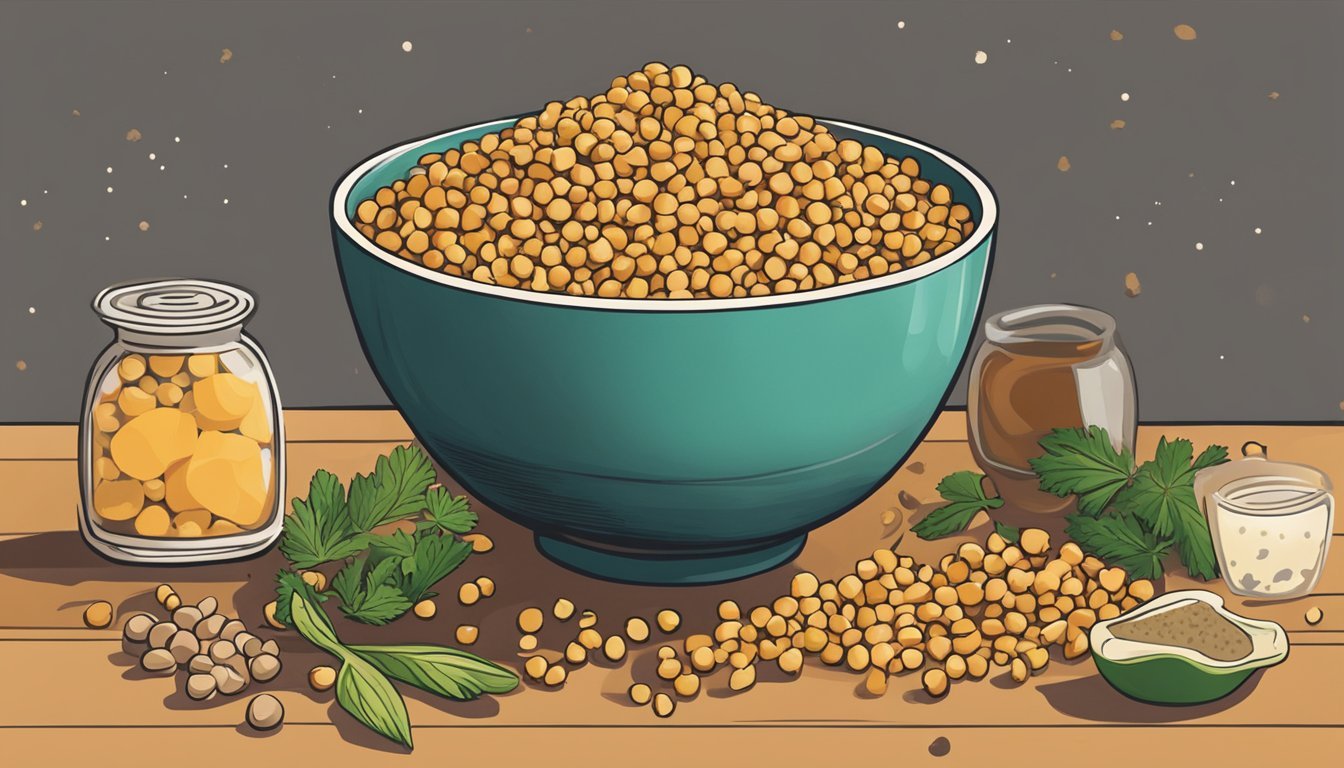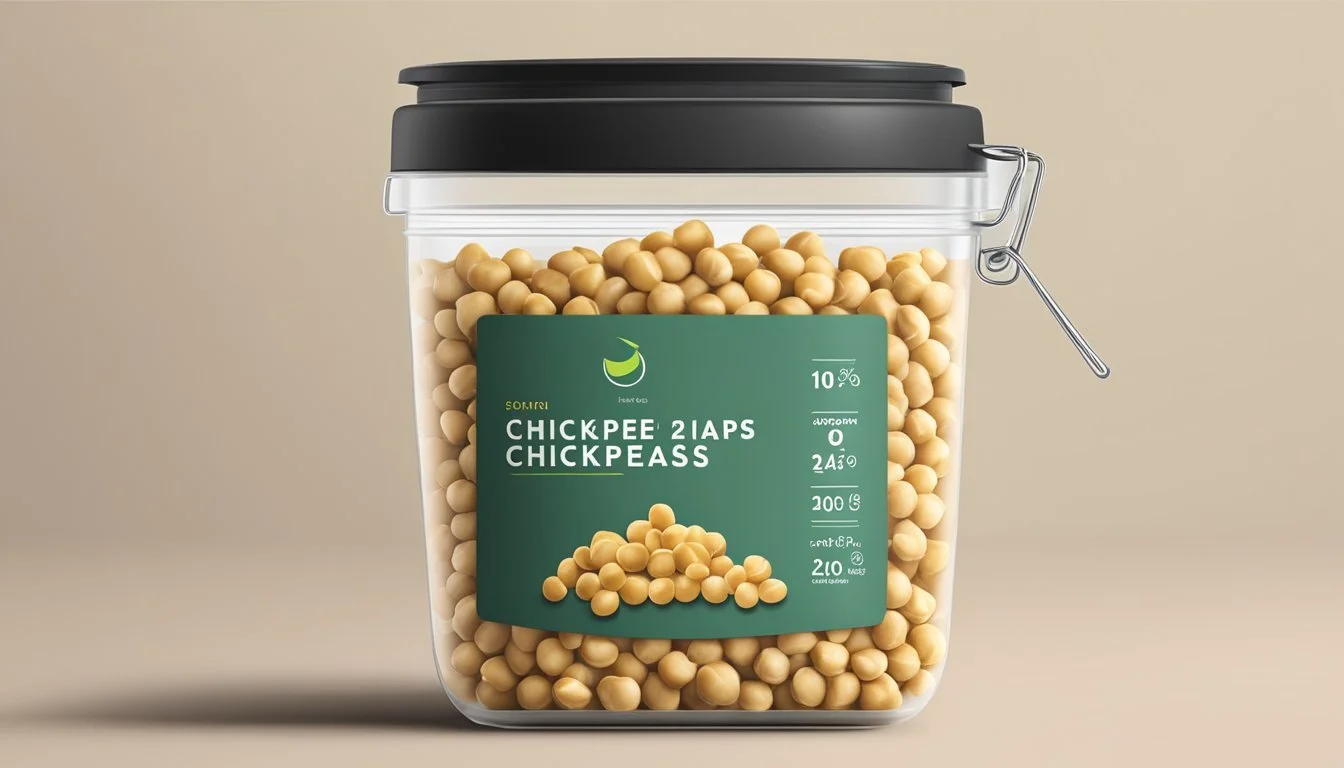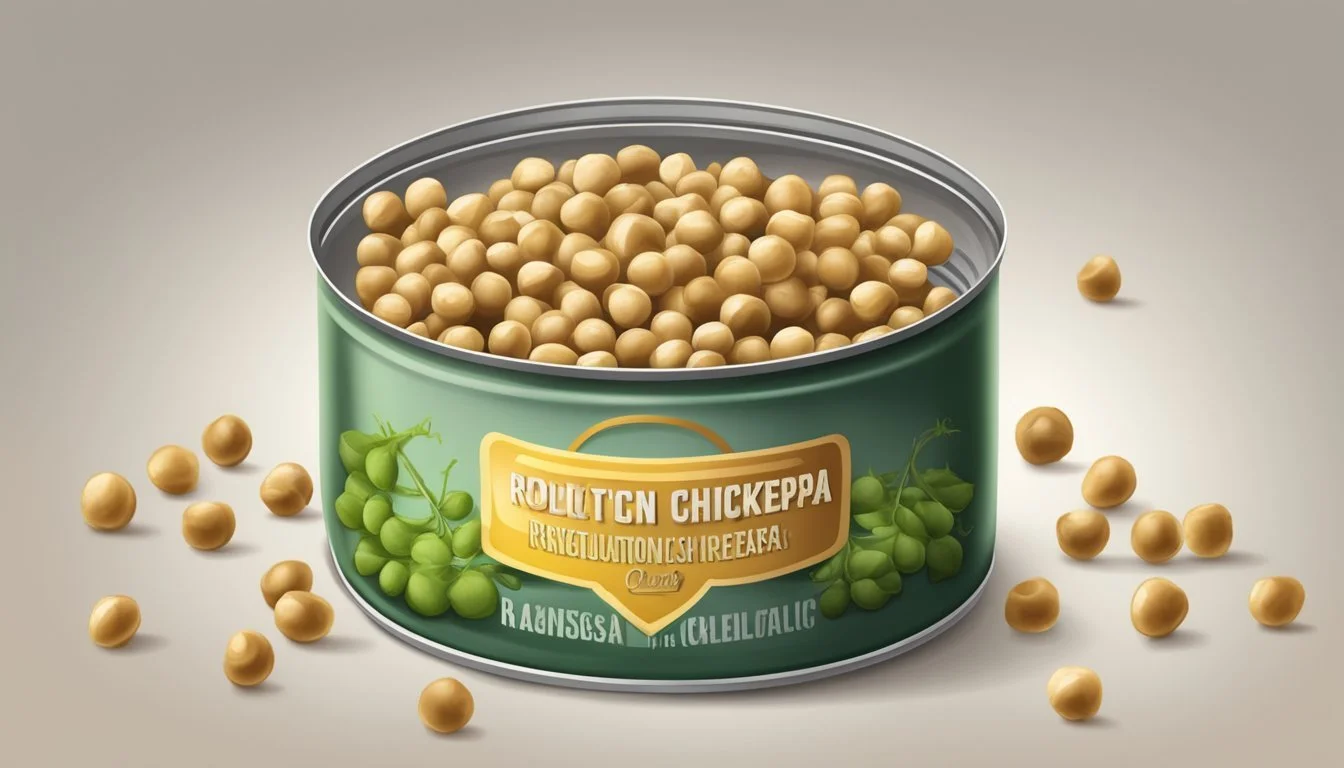Does Chickpeas Go Bad?
How to Tell and Storage Tips
Chickpeas, also known as garbanzo beans, are a popular and nutritious legume enjoyed by vegetarians, vegans, and anyone looking to boost their intake of plant-based protein. Loaded with protein, fiber, vitamins, and minerals, chickpeas are a kitchen staple in many households. But the question remains: does this versatile ingredient go bad?
Yes, chickpeas can go bad if not stored properly. When dealing with dried chickpeas, it's essential to keep them in a cool, dry place and away from strong odors like onions or garlic, as they can absorb these smells. Properly stored, dried chickpeas can last for several years, though they may lose quality over time. Canned chickpeas should also be checked for dents or leaks and consumed by the expiration date.
Roasted chickpeas, a popular snack, have a shorter shelf life. At room temperature, they typically remain fresh for about 2-3 weeks when stored in an airtight container. To extend their shelf life up to six months, refrigeration is recommended. Ensuring chickpeas are stored correctly helps maintain their nutritional benefits and keeps them safe to eat.
Understanding Chickpeas
Chickpeas, known for their high protein and fiber content, are versatile ingredients. They appear in various dishes like salads, soups, and stews, making them a staple in many cuisines around the world.
Nutritional Value of Chickpeas
Chickpeas are packed with nutrients. They provide a substantial amount of protein, making them an excellent option for plant-based diets. They are rich in dietary fiber, which aids digestion and helps maintain a healthy weight.
A 100-gram serving of chickpeas includes about 19 grams of protein and 17 grams of fiber. They also contain essential vitamins and minerals such as iron, magnesium, and B vitamins, contributing to their status as a nutritious ingredient. Moreover, their low glycemic index makes them suitable for managing blood sugar levels.
Varieties and Uses in Cuisine
There are two main types of chickpeas: Desi and Kabuli. Desi chickpeas are smaller, darker, and have a rough coat. They are commonly used in traditional dishes in India and Ethiopia. Kabuli chickpeas are larger, lighter in color, and have a smoother coat, commonly found in Mediterranean and Middle Eastern cuisines.
Chickpeas can be used in various culinary applications. They are the main ingredient in hummus, a popular Middle Eastern dip. They also form the base of falafel, a deep-fried ball or patty. In soups, stews, and curries, chickpeas add texture and absorb flavors well. Roasted chickpeas make for a crunchy, protein-packed snack.
Their versatility extends to salads, where they provide a hearty component. This makes them an essential pantry item for anyone looking to add both nutrition and variety to their meals.
Storing Chickpeas
Chickpeas, whether dry or cooked, require specific storage conditions to maintain their quality. Proper storage ensures they remain fresh, safe, and ready to use when needed.
Pantry Storage for Dry Chickpeas
To maximize the shelf life of dry chickpeas, store them in a cool, dry area. An airtight container is essential to keep moisture and pests out. It's advisable to keep the container away from direct sunlight and heat sources. Properly stored, dry chickpeas can last for several years without losing nutritional value.
Storage Key Points:
Use an airtight container.
Keep in a cool, dry location.
Avoid direct sunlight.
Refrigerating Cooked Chickpeas
After cooking chickpeas, ensure they are drained and cooled before storing. Place them in an airtight container or a resealable bag to retain moisture. Refrigerated cooked chickpeas should be consumed within 3-5 days to ensure optimal taste and texture. For added flavor, a small amount of oil can be drizzled on the chickpeas before sealing.
Storage Key Points:
Store in an airtight container.
Refrigerate for up to 5 days.
Optional: Drizzle with oil.
Freezing Options for Longevity
For long-term storage, freezing cooked chickpeas is effective. Spread cooled chickpeas in a single layer on a baking sheet to pre-freeze them, then transfer to a freezer-safe bag or container. This method prevents clumping. Labeling the container with the date helps in keeping track of the storage period. Frozen chickpeas can last for up to 6 months without significant loss of texture or flavor.
Storage Key Points:
Pre-freeze on a baking sheet.
Transfer to a freezer-safe bag.
Label with the storage date.
Signs of Spoilage
Identifying spoilage in chickpeas involves checking for texture, color, and odor irregularities. Spoiled chickpeas pose a risk for food poisoning due to bacteria. This guides will help in detecting spoilage in dry, canned, and cooked chickpeas.
Inspecting Dry Chickpeas
Dry chickpeas should have a uniform, hard texture. If they feel soft or powdery, they may have absorbed moisture and are likely spoiled. Discoloration is another key indicator; chickpeas that have turned dark or have irregular spots should be discarded.
A musty smell suggests the presence of mold or bacteria. Rinsing and boiling will not remove these contaminants. Checking the expiration date on the package also helps determine peak quality and safety.
Detecting Spoilage in Canned Chickpeas
Canned chickpeas last for years but can still spoil. Any can that is bulging, dented, or leaking should be discarded immediately. These are signs of potential bacterial contamination which can lead to food poisoning.
When opened, inspect the chickpeas for any unusual color changes or off smells. Chickpeas should retain a slightly nutty aroma. If they smell sour or unusual, they are no longer safe to eat. It's also important to check for mold inside the can.
Checking Cooked Chickpeas for Freshness
Cooked chickpeas should be stored in the refrigerator and consumed within 3-4 days. Texture is a good indicator; they should remain firm and not slimy. If they develop a slimy coating, they have likely gone bad.
The flavor should be neutral to slightly nutty. A sour taste indicates spoilage. Any off smell or unusual color such as black or green spots is a clear sign to discard them. For extended storage, freezing cooked chickpeas is a safe option.
Preparing Chickpeas
Chickpeas are versatile and can be prepared in various ways depending on whether they are dried or canned. Proper preparation enhances their texture, flavor, and nutritional value.
Soaking and Cooking Dried Chickpeas
Soaking dried chickpeas is crucial. Overnight soaking is the most common method. Place chickpeas in a large bowl, add enough water to cover them by several inches, and let them soak for at least 8 hours or overnight.
To cook, drain and rinse the soaked chickpeas. Transfer them to a large pot and cover with fresh water. Bring to a boil, then reduce the heat and simmer. Cooking typically takes 1-2 hours, depending on desired tenderness. Adding a teaspoon of baking soda to the pot can speed up the process and yield softer chickpeas.
For added convenience, soaked chickpeas can be frozen for later use. Simply spread them on a baking sheet to freeze individually before transferring them to a bag.
Methods for Preparing Canned Chickpeas
Canned chickpeas are an excellent time-saving option. They require minimal preparation and can be used straight from the can, though rinsing them under cold water is recommended to reduce sodium content and improve taste.
For recipes that call for roasted chickpeas, the canned variety is ideal. Preheat the oven to 400°F (200°C), toss the chickpeas with olive oil and seasonings, and spread them on a baking sheet. Bake for 20-30 minutes until they are crispy and crunchy.
They can also be sautéed with herbs and spices to add to salads, grain bowls, or eaten as a plant-based protein snack.
Creating Dishes From Cooked Chickpeas
Cooked chickpeas can be transformed into various dishes. One popular use is in hummus. Blend cooked chickpeas with tahini, lemon juice, garlic, and olive oil until smooth.
They also work well in stews, soups, and curries, providing a hearty texture and rich flavor. Chickpeas can add a protein boost to salads when combined with greens, veggies, and a light dressing.
For a crunchy snack, roasted chickpeas provide a flavorful and nutritious option. Spice them up with paprika, cumin, or garlic powder before roasting to enhance their taste.
Maximizing Chickpea Shelf Life
Proper storage is crucial for keeping chickpeas at their best quality. Focus on using airtight containers and maintaining the right conditions.
Proper Packaging and Containers
Using airtight containers helps in keeping chickpeas fresh. These containers prevent moisture and air from entering, which can degrade the beans.
Glass jars, plastic containers, or metal tins with tight seals are ideal. These materials protect against oxidation and moisture, crucial for maintaining peak quality.
Sealed plastic bags with ziplock tops can also work well. It’s important to squeeze out as much air as possible before sealing. If chickpeas are stored in their original package, ensure it is tightly closed after each use.
Ideal Conditions for Preserving Quality
Store chickpeas in a cool, dry place. The temperature should be stable, ideally below 75°F. High temperatures can cause the chickpeas to spoil faster. A pantry or a cupboard away from heat sources is perfect.
Air circulation is important to prevent moisture buildup. Avoid storing chickpeas in humid areas. Moisture can lead to mold growth, effectively reducing the chickpeas' shelf life.
Properly stored, dried chickpeas can last for ±2-3 years. Refrigerating them can extend this period. If using a refrigerator, keep them in an airtight container to prevent condensation.
By maintaining these conditions, chickpeas can be preserved at their best quality for extended periods.
Incorporating Chickpeas in a Healthy Diet
Chickpeas, also known as garbanzo beans, are legumes that offer a rich source of protein and fiber. They are particularly beneficial for vegetarians and vegans seeking plant-based protein. Including chickpeas in meals can enhance their nutritional value.
Rich in vitamins and minerals, chickpeas support a balanced diet. They contain iron, magnesium, and B-vitamins, which are crucial for energy production and overall health.
Chickpeas can be easily added to various dishes. Salads benefit from their texture and flavor. Soups and stews gain additional nutrients and thickness when chickpeas are included.
For a quick snack, roasted chickpeas can be seasoned with various spices. This provides a crunchy, nutritious alternative to traditional snacks.
Example Meal Ideas:
Hummus: A spread made from blended chickpeas, tahini, lemon juice, and garlic.
Falafel: Fried or baked balls made from ground chickpeas and spices.
Chickpea Salad: Mixed with tomatoes, cucumbers, and a light vinaigrette.
Incorporating chickpeas into a healthy diet ensures a diverse intake of essential nutrients, contributing to overall well-being. They are versatile and can enhance many recipes, making them a practical choice for anyone aiming to maintain a balanced diet rich in plant-based foods.








